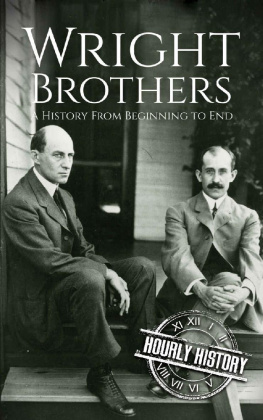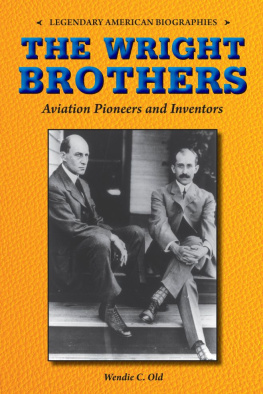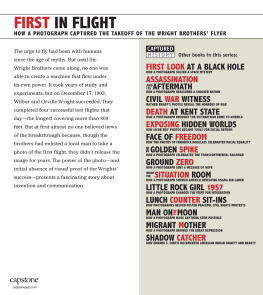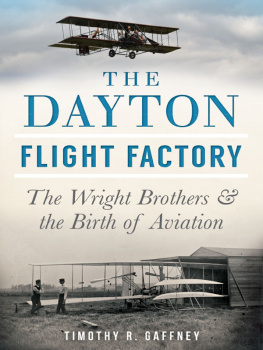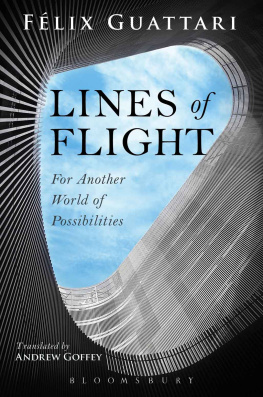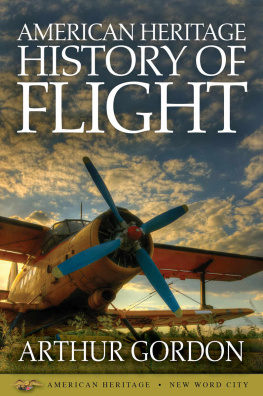Andrew Curry - The Story of Flight
Here you can read online Andrew Curry - The Story of Flight full text of the book (entire story) in english for free. Download pdf and epub, get meaning, cover and reviews about this ebook. year: 2014, publisher: New Word City, LLC, genre: Non-fiction. Description of the work, (preface) as well as reviews are available. Best literature library LitArk.com created for fans of good reading and offers a wide selection of genres:
Romance novel
Science fiction
Adventure
Detective
Science
History
Home and family
Prose
Art
Politics
Computer
Non-fiction
Religion
Business
Children
Humor
Choose a favorite category and find really read worthwhile books. Enjoy immersion in the world of imagination, feel the emotions of the characters or learn something new for yourself, make an fascinating discovery.
- Book:The Story of Flight
- Author:
- Publisher:New Word City, LLC
- Genre:
- Year:2014
- Rating:4 / 5
- Favourites:Add to favourites
- Your mark:
- 80
- 1
- 2
- 3
- 4
- 5
The Story of Flight: summary, description and annotation
We offer to read an annotation, description, summary or preface (depends on what the author of the book "The Story of Flight" wrote himself). If you haven't found the necessary information about the book — write in the comments, we will try to find it.
From the Wright brothers breakthrough to the latest robot jets, the world has been shaped by the men and women who got us off the ground. Here, from award-winning journalist Andrew Curry, is the history of flight, very briefly told.
The Story of Flight — read online for free the complete book (whole text) full work
Below is the text of the book, divided by pages. System saving the place of the last page read, allows you to conveniently read the book "The Story of Flight" online for free, without having to search again every time where you left off. Put a bookmark, and you can go to the page where you finished reading at any time.
Font size:
Interval:
Bookmark:
As a U.S. Air Force test pilot, Lieutenant Colonel Dawn Dunlop has flown dozens of different airplanes, from the nimble F-15E Strike Eagle fighter to the massive C-17 transport jet to the Russian MIG-21. Stationed at Edwards Air Force Base near Los Angeles, shes part of the elite squadron that is putting the cutting-edge F/A-22 Raptor, a jet fighter, through its paces. But the aircraft that Dunlop has had the toughest time controlling was a replica of the Wright Brothers 1902 glider. More than once she crash-landed the muslin-skinned craft onto the windswept sands of Kitty Hawk, North Carolina. It was a real eye-opener, Dunlop recalled of the (bruising) experience. Theyve made it so simple to fly today weve forgotten how difficult it was back then.
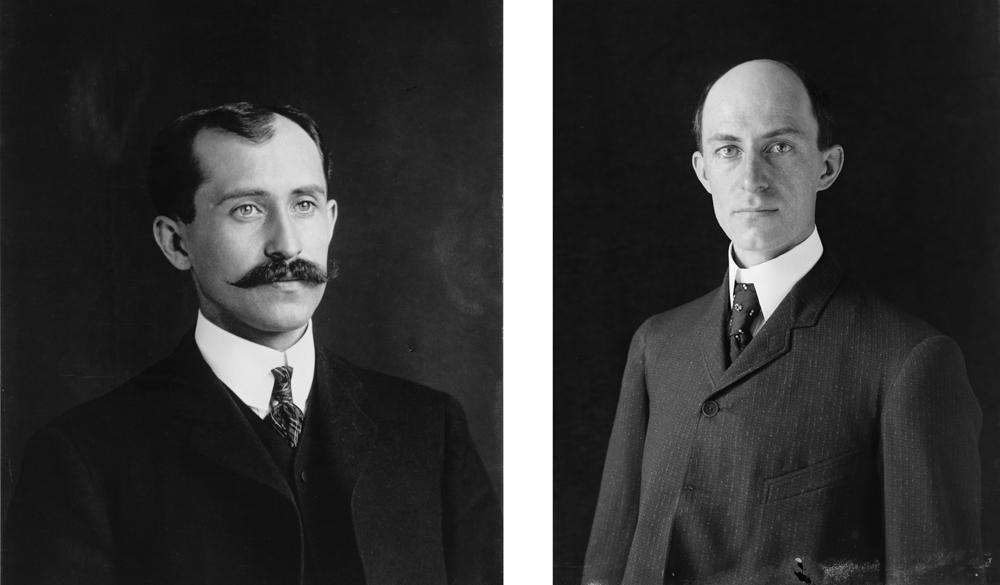
Orville and Wilbur Wright
It was just after 10:30 in the morning on December 17, 1903, when Orville Wright, an Ohio inventor and bicycle shop owner, took off into a near-freezing head wind for a 12-second propeller-driven trip - a 120-foot voyage that may well have launched the modern age. Its easy nowadays to lose sight of just how amazing those landmark early flights were. As Dunlop discovered, Wright aircraft were dangerous. Frail assemblies of wire, wood and cloth powered by homemade engines, they were reluctant birds, difficult to steer and easy to crash. In fact, planes based on the Flyer that Orville Wright coaxed off the ground would kill dozens of pilots in coming years.

Still, the craft embodied what we recognize today as the basics of flight, and though aviation has advanced far beyond anything the brothers might have first imagined today, planes carry more than 3 billion passengers a year - the Wrights anticipated a surprising range of crucial developments. Flying that glider was a real challenge, Dunlop told me, but when you take yourself back, you realize what a brilliant design it really was.
From the ancient Greeks, whose mythological tale of Icarus wax wings melting when he soared too close to the sun, to carvings left by the South American Incan civilization on the walls of its holy Andean citadel of Machu Picchu, humanity has long been fascinated by the idea of flying. Renaissance paintings and frescoes of Christs ascension into heaven had a concept of air as a thing to be worked, Richard Hallion, a former National Air and Space Museum curator and Air Force historian, and author of Taking Flight - Inventing the Aerial Age from Antiquity through the First World War, told me. Christ is shown lifting off like a rocket, and the Apostles all have windblown garments. Angels have muscular wings in proportion to their size. Among the most startling early visions of powered human flight are Leonardo da Vincis fifteenth-century sketches of mechanical flapping wings and crude helicopters. Yet Leonardos ideas never got off the page.
The first person to apply scientific principles to the problems of flight was someone youve probably never heard of George Cayley, an English baronet known today as the father of aerial navigation. Born in 1773, he built the first glider to go aloft with a person aboard - his coachman, in 1853 - and correctly identified lift, drag, and thrust as the main forces to be mastered for powered flight. Cayley, who published his research in the likes of Nicholsons Journal of Natural Philosophy, Chemistry, and the Arts, was the first aviation experimenter to use research methods that would be familiar to todays scientists and engineers.
The first hot-air balloon with passengers took to the air in 1783, when its inventors, the Montgolfier brothers, sent a sheep, a rooster, and a duck soaring for eight minutes in the sky over Versailles. For the next century, lighter-than-air balloons and airships, unwieldy or impossible to control, were considered the only realistic way to get aloft. Meanwhile, inventors kept struggling with the challenge of powered, heavier-than-air flight. Some built gliders shaped like moths or bats; others built massive, steam-powered aircraft that were unflyable; one such contraption collapsed under its own weight. None had any influence on the design of the airplane.
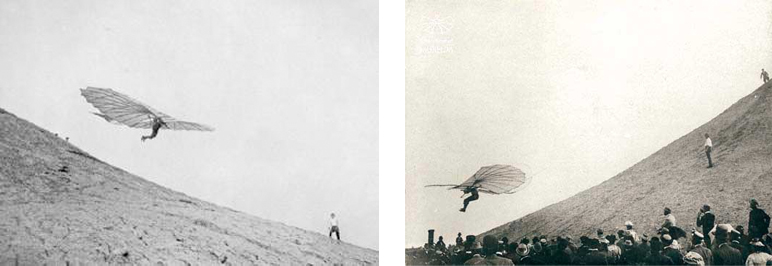
Some pioneers were on the right track. The German Otto Lilienthal built 16 different gliders between 1891 and 1896, making almost 2,000 flights in the low hills outside Berlin. Born in 1848, Lilienthal was an engineer, designing boilers and steam engines. But his true passion was flight, and in the 1890s he moved quickly from studies of bird flight to graceful gliders. He built a 50-foot-tall artificial hill on the outskirts of Berlin to test his designs. In 1891, he managed a brief hop of 85 feet. Two years later, he was making flights that covered the length of three football fields, sometimes 60 feet off the ground more than 5 times as far as the Wright brothers first flight.
In an age captivated by invention and progress, Lilienthals fame spread quickly fueled in part by another new technology, photography. Pictures of Lilienthals aerial exploits drew aspiring flyers from around the world. Samuel Langley, head of the Smithsonian Institution and an aspiring aviator himself, visited Lilienthal in Germany, and others begged him to set up a flight school in the United States. As Lilienthal experimented with a new glider design in 1896, a sudden updraft stalled his craft and sent him plummeting 50 feet to the ground, breaking his spine. According to legend, his last words were, Sacrifices must be made. According to Bernd Lukasch, the Otto Lilienthal Museums director, his last words were likely less dramatic: We have to wait a minute, and then well go on.
Convinced that powered flight was a dangerous folly, many Europeans working on the problem aborted their efforts. Yet pioneers like Lilienthal, Frances Clement Ader, Englands Cayley, and an eccentric Brazilian blimp builder name Albert Santos-Dumont all cleared the way for the Wrights takeoff providing critical data on aerodynamics and whipping up excitement about flight. Even their failures helped show inventors who followed which paths were dead ends. The Wrights insisted on giving credit where it was due Orville later wrote that Lilienthals death was the spark that got the brothers interested in flight, and he even took it upon himself to financially support the Germans widow.
Unlike their predecessors, the Wrights realized that control of an aircraft was at least as important as lift and thrust. Their crucial inspiration was understanding that aircraft would fly in three dimensions: climbing and descending (pitch), left and right (yaw), and roll (the banking, tilting motion that in conjunction with the rudder sends a plane into dramatic, sweeping turns). Roll, especially, had been largely ignored or unimagined by their predecessors. The Wrights, as cyclists, visualized an airplane turning much as a bike rider makes a hard turn - by leaning into it. John Anderson, curator of aerodynamics at the National Air and Space Museum and author of The Airplane - A History of Its Technology, told me the Wrights longest-lasting technological contribution is purely and simply flight control. Wilbur Wright was the first person to understand how an airplane turned.
Simple rudders, like those used to steer boats through water, and elevators (like rudders, except horizontal) were enough to move a plane up and down or left and right. But the third dimension, making a plane bank and turn, required a wholly new approach. The Wrights first breakthrough was realizing that air flowing across the wings could be used to push one wing down while it lifted the other - rolling the plane through a banked, leaning turn. Their next was figuring out how to get both wings to move the right way at the right time - a beautifully simple concept called wing-warping, which involved twisting the entire wing to facilitate turning.
Font size:
Interval:
Bookmark:
Similar books «The Story of Flight»
Look at similar books to The Story of Flight. We have selected literature similar in name and meaning in the hope of providing readers with more options to find new, interesting, not yet read works.
Discussion, reviews of the book The Story of Flight and just readers' own opinions. Leave your comments, write what you think about the work, its meaning or the main characters. Specify what exactly you liked and what you didn't like, and why you think so.


